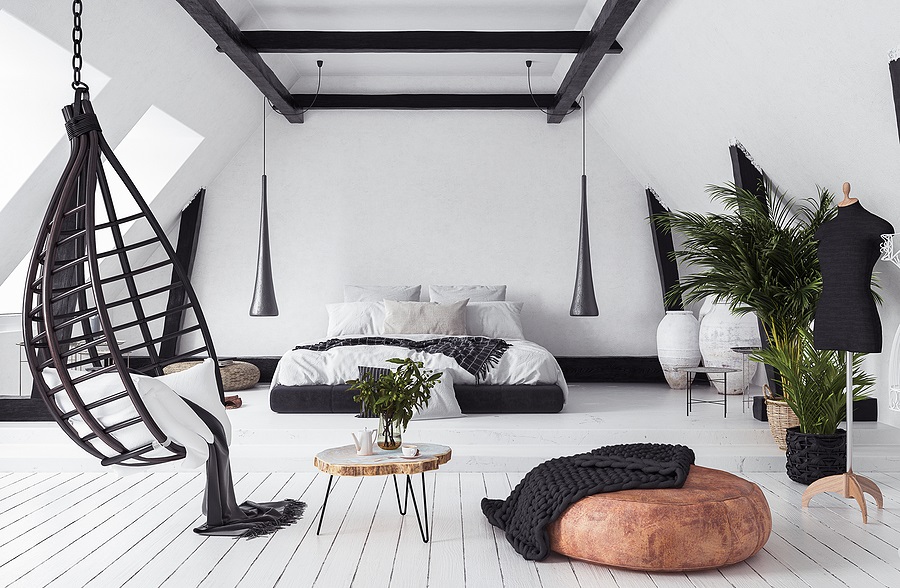Transforming your attic into a usable living space can be one of the most rewarding home improvement projects. Not only does it add valuable square footage to your home, but it also offers endless possibilities for creating a unique and functional area. Whether you’re envisioning a cosy bedroom, a home office, or a playroom for the kids, here are some essential tips for converting your attic into a practical and stylish space, tailored to the needs and considerations of Irish homes:-
1. Assess Your Attic’s Potential
Before diving into a conversion, it’s crucial to evaluate the condition and suitability of your attic space. Consider the following factors:
- Headroom and Space: Ensure there is enough headroom. A minimum of 2.4 metres (8 feet) from floor to ceiling is ideal, but you can work with less if the space is used creatively.
- Structural Integrity: Check for structural issues such as sagging beams or inadequate support. You may need a structural engineer to assess and recommend if the roof needs to be reinforced.
- Insulation and Ventilation: Proper insulation is essential for making your attic comfortable year-round. Ensure the space is well-ventilated to prevent issues like dampness and condensation.
2. Plan Your Layout Carefully
A well-thought-out layout is key to maximising the functionality of your attic conversion. Think about how you intend to use the space and plan accordingly:
- Room Functionality: Decide on the primary use of the space—be it a bedroom, study, or lounge. This will influence the layout, lighting, and furniture placement.
- Storage Solutions: Incorporate built-in storage to make the most of the sloped ceilings and awkward spaces. Custom cabinetry and under-eaves storage can be very effective.
- Accessibility: Ensure that access to the attic is safe and convenient. Consider installing an attic ladder, fold-down stairs, or even a more permanent staircase depending on budget and Building Regulations.
3. Focus on Insulation and Heating
Attics can be notoriously difficult to keep warm in Winter and cool in Summer, particularly in Ireland’s variable climate. Effective insulation and heating solutions are crucial:
- Insulation: Use high-quality insulation materials to keep the space warm and energy-efficient. Consider insulating the roof and walls, as well as adding insulated flooring if needed.
- Heating: Incorporate efficient heating solutions, such as underfloor heating or a small, energy-efficient radiator.
4. Improve Natural Light and Ventilation
Attics often lack natural light and proper ventilation, which can make the space feel dark and cramped. Here’s how to address this:
- Skylights and Roof Windows: Installing skylights or roof windows can flood the space with natural light and provide ventilation. Opt for high-quality, weather-resistant windows to handle Ireland’s climate.
- Dormer Windows: If your budget allows, consider adding dormer windows to increase headroom and create a more spacious feel.
5. Choose Appropriate Flooring and Finishes
Selecting the right flooring and finishes is important for both aesthetics and practicality:
- Flooring: Opt for durable and comfortable flooring options like carpet, laminate, or engineered wood. Consider adding a rug for extra warmth and comfort.
- Finishes: Use light, neutral colours for walls and ceilings to make the space feel larger and brighter. Consider using paint or wallpaper that complements the overall design theme.
6. Incorporate Smart Storage Solutions
Maximise the utility of your attic space by integrating smart storage solutions:
- Built-in Units: Custom-built shelving and cabinets can fit snugly under eaves and around awkward corners.
- Multi-Functional Furniture: Choose furniture that serves dual purposes, such as a bed with storage drawers or a desk that doubles as a vanity.
7. Ensure Compliance with Building Regulations
In Ireland, any attic conversion must comply with the Building Regulations. Ensure you:
- Obtain Planning Permission: Depending on the scope of the conversion, you may need planning permission from your local authority. Check with your local county council to determine the requirements.
- Follow Building Regulations: Ensure your conversion meets all building regulations for safety, including structural integrity, fire safety, and insulation standards, an architect or building engineer can advise in this regard. Also, check out Loft Conversion Guidelines from the Department of Housing, Local Government and Heritage for more details.
8. Hire Qualified Professionals
While DIY projects can be tempting, converting an attic requires particularly specialised skills:
- Architects and Building Engineers: An architect or building engineer can help with planning and ensure the space is used effectively.
- Builders and Contractors: Hire experienced builders who specialise in attic conversions. They can handle structural work, insulation, and other technical aspects of the project.
9. Budget Wisely
Attic conversions can vary widely in cost. Plan your budget carefully and include a contingency fund for unexpected expenses:
- Cost Estimates: Get detailed quotes from several contractors to ensure you’re getting a fair price.
- Value for Money: Consider the long-term benefits and increased property value that a well-executed attic conversion can bring.
10. Add Personal Touches
Finally, make the space your own by adding personal touches:
- Decor: Choose decor that reflects your style and complements the function of the room.
- Comfort: Add cosy elements like cushions, throws, and soft lighting to make the space inviting and comfortable.
Conclusion
Transforming your attic into a usable living space is a fantastic way to enhance your home’s functionality and value. By carefully planning your layout, focusing on insulation and heating, and ensuring compliance with building regulations, you can create a beautiful and practical room that meets your needs. Whether you’re creating a new bedroom, office, or play area, these tips will help you turn your attic into a space you’ll enjoy for years to come.
If you’re looking for help to convert your attic, remember you can post your job on Tradesmen.ie and get a number of quotes from rated architects, engineers and builders. It’s a great way to find the right professionals for your project and ensure a successful conversion!
Cheers
Oliver Dempsey
Tradesmen.ie
12 September 2024
General Tips for hiring a tradesman
Here are some tips to consider when hiring a tradesman:-
1. Ask for phone numbers of references so that you can check them out
2. Check insurance of the tradesman where insurance is required
3. Hire a suitably qualified architect, building surveyor or building engineer if the job is anything to do with a new build, building renovation or extension







